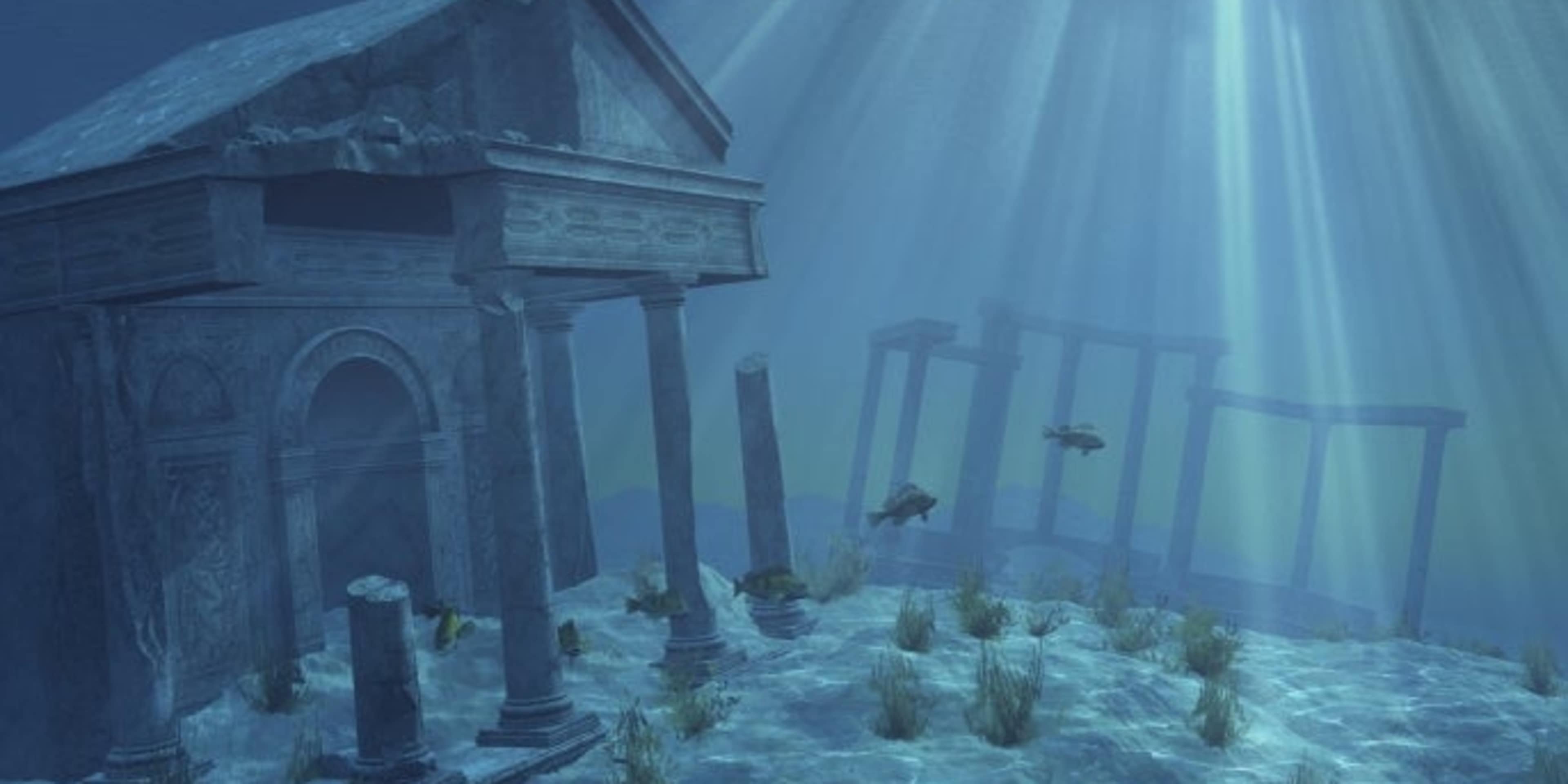Atlantis was Antarctica.
Another theory—that Atlantis was actually a much more temperate version of what is now Antarctica—is based on the work of Charles Hapgood, whose 1958 book Earth’s Shifting Crust featured a foreword by Albert Einstein. According to Hapgood, around 12,000 years ago the Earth’s crust shifted, displacing the continent that became Antarctica from a location much further north than it is today. This more temperate continent was home to an advanced civilization, but the sudden shift to its current frigid location doomed the civilization’s inhabitants—the Atlanteans—and their magnificent city was buried under layers of ice. Hapgood’s theory surfaced before the scientific world gained a full understanding of plate tectonics, which largely relegated his “shifting crust” idea to the fringes of Atlantean beliefs.
The story of Atlantis was a mythical retelling of the Black Sea Flood.
This theory presumes Atlantis itself was fictional, but the story of its demise was inspired by an actual historical event: the breaching of the Bosporus by the Mediterranean Sea and subsequent flooding of the Black Sea, around 5600 B.C. At the time, the Black Sea was a freshwater lake half its current size. The flooding inundated civilizations known to flourish along its shore with hundreds of feet of seawater in a short period of time (perhaps less than a year). As inhabitants of the region scattered, they spread tales of the deluge and may have led—thousands of years later—to Plato’s account of Atlantis.
Atlantis is the story of the Minoan civilization, which flourished in the Greek islands circa 2500-1600 B.C.
One of the more recent Atlantean theories concerns the civilization that flourished on the Greek islands of Crete and Thera (now Santorini) more than 4,000 years ago: the Minoans, named for the legendary King Minos. Believed to be Europe’s first great civilization, the Minoans built splendid palaces, constructed paved roads and were the first Europeans to use a written language (Linear A). At the height of their power, however, the Minoans suddenly disappeared from history—an enduring mystery that has fueled belief in a link between this great, doomed civilization and Plato’s Atlantis. Historians believe around 1600 B.C., a massive earthquake shook the volcanic island of Thera, triggering an eruption that spewed 10 million tons of rock, ash and gas into the atmosphere. Tsunamis that followed the eruption were large enough to wipe out Minoan cities throughout the region, devastation that may have made the Minoans vulnerable to invaders from the Greek mainland.








